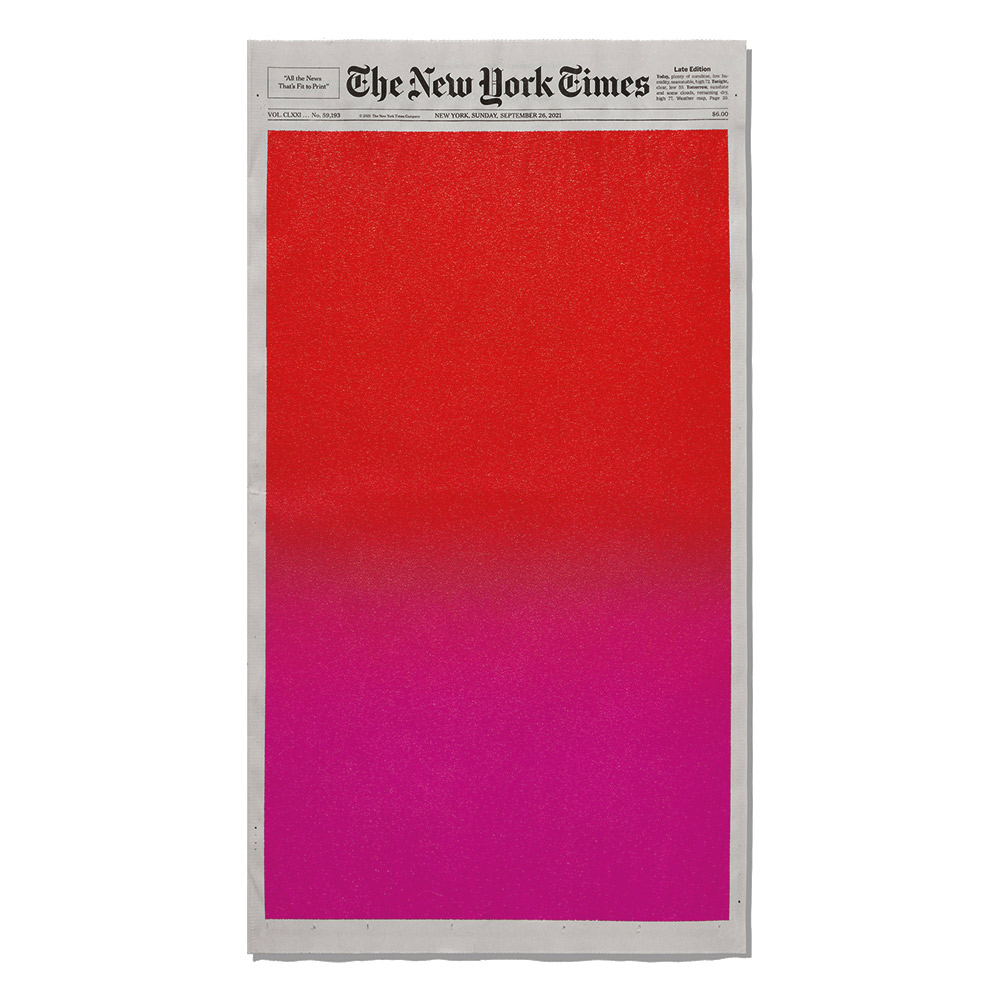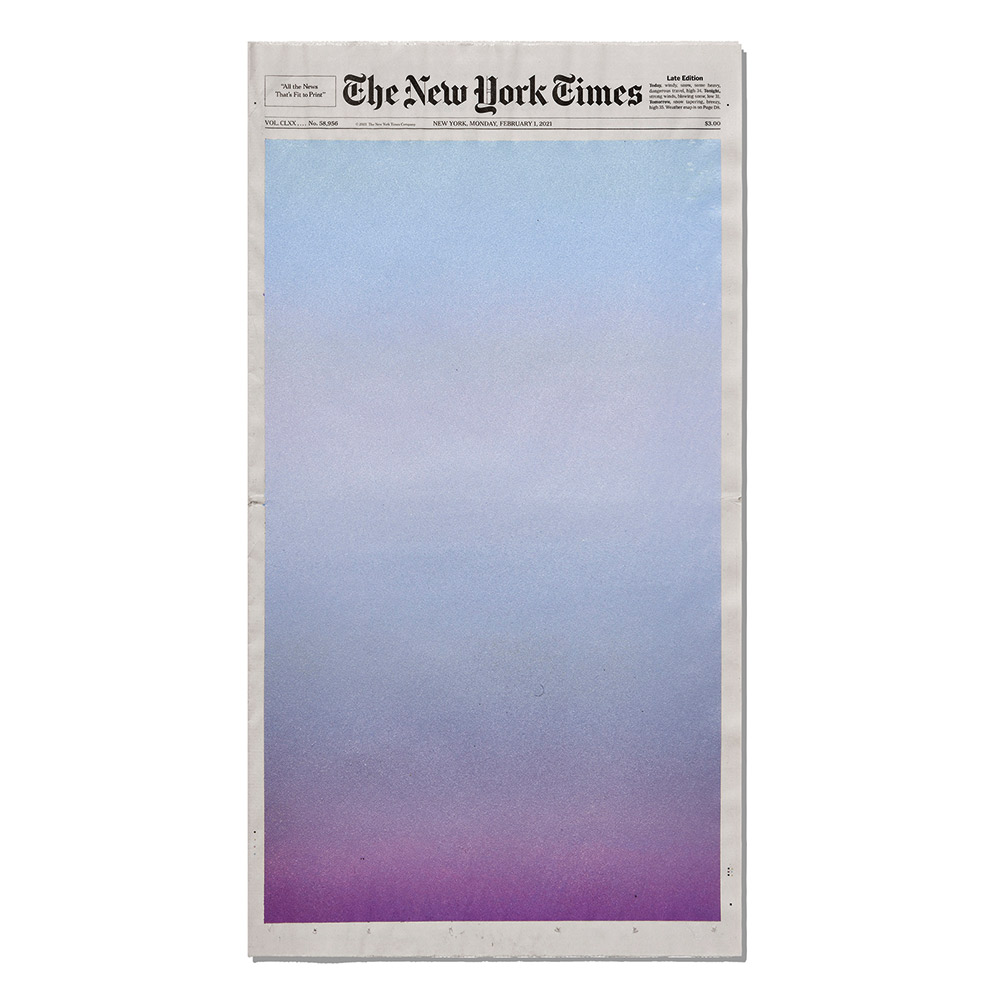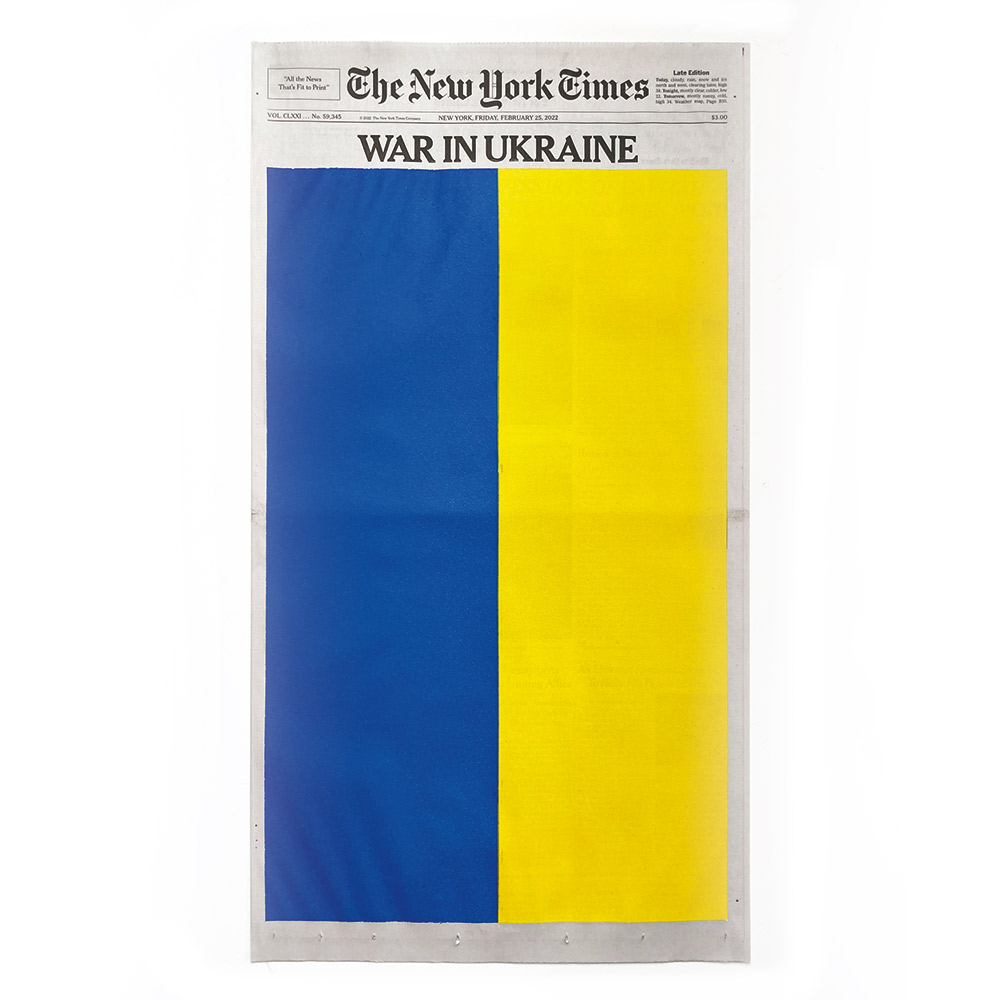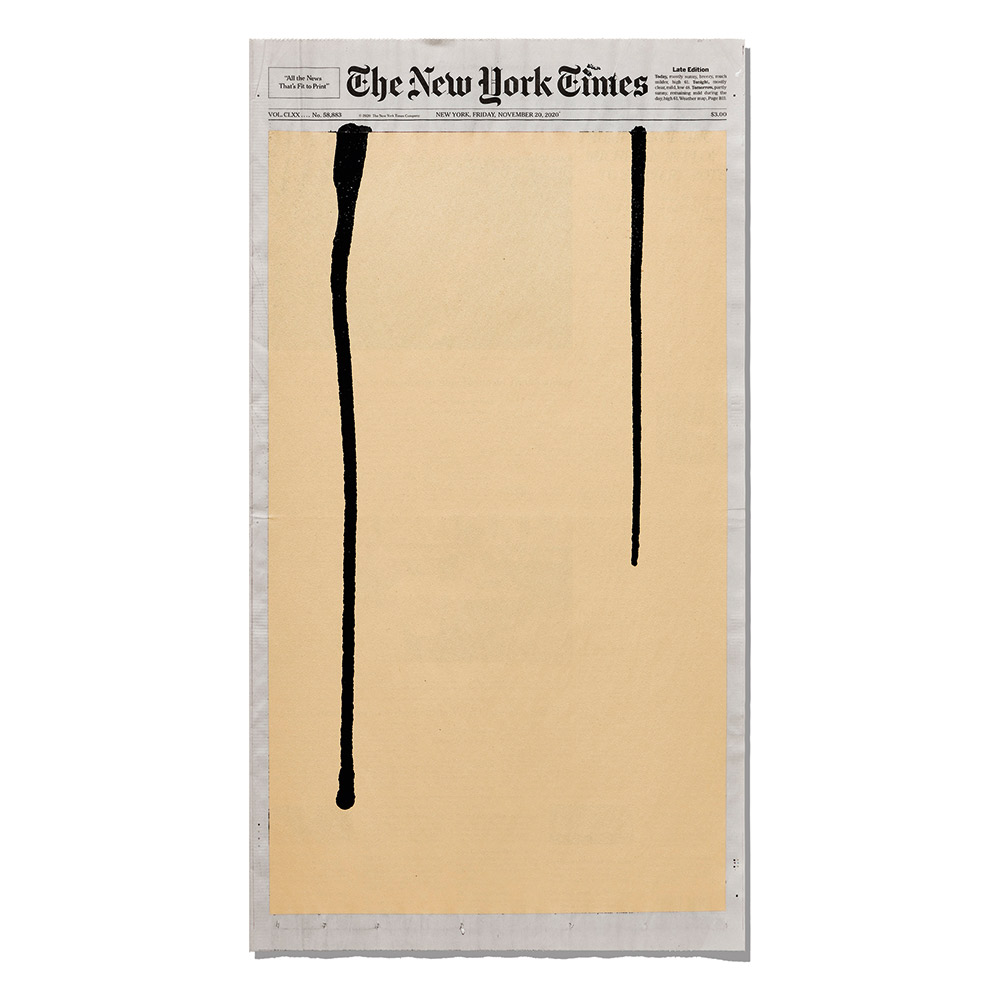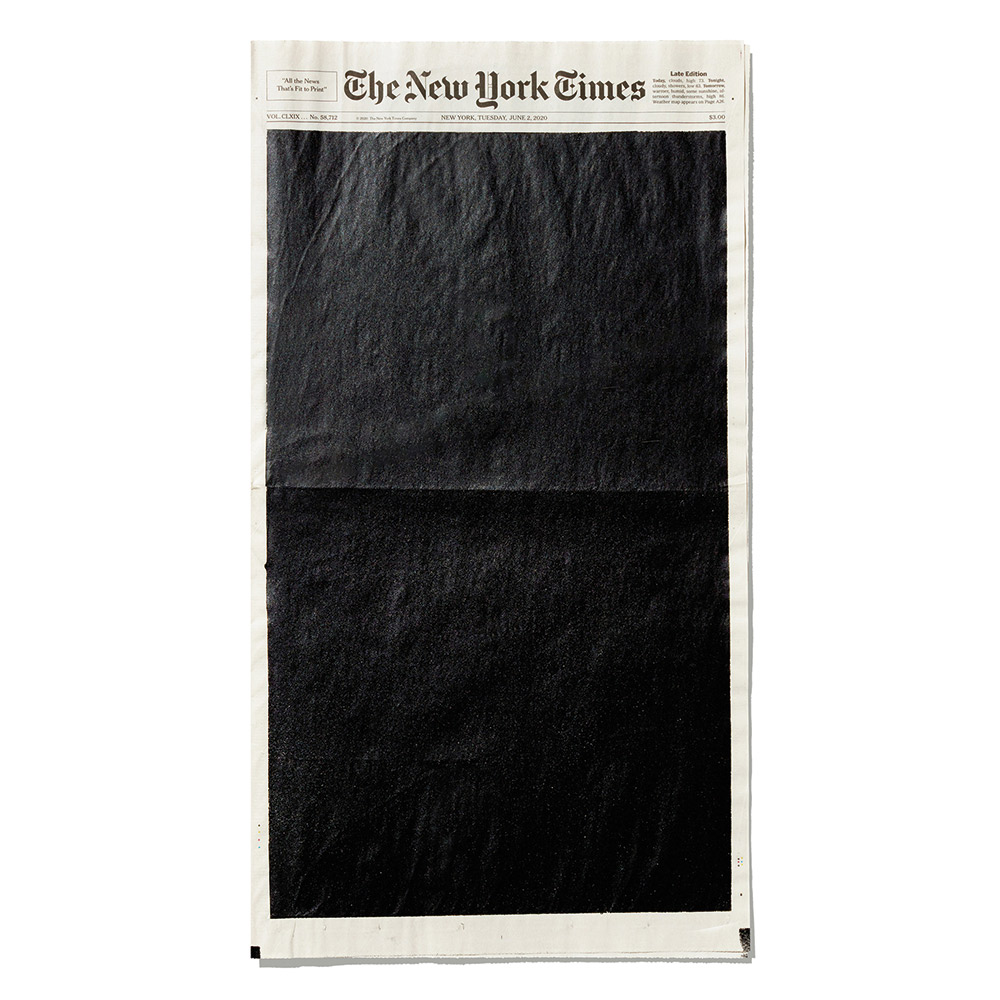Whether it’s the emotional tangles of Jackson Pollock’s gestural action paintings or Egon Schiele’s pained self-portraiture, art has a singular ability to sublimate the inner workings of the mind, tapping into a wealth of otherwise inexpressible sensibilities.
A fundamental aspect of Sho Shibuya’s works—which have proliferated through the art world and social media sphere with a telling sense of urgency—is their instinctive qualities. “My paintings are simply an abstract, visual interpretation based on my own feelings that day,” he admits. Formally speaking, each piece follows a similar visual template, wherein Shibuya takes a New York Times front page and paints over the accompanying text with a large image, occasionally keeping the day’s headline visible. The results range in aesthetic effects, from gradient colour fields to more conceptual experiments, but always culminate in an instantly recognizable spontaneity. For Shibuya, the contextual thread that weaves each piece together is “a reflection of how I felt in the moment, on that morning.”
A distinct sense of temporality is evident in Shibuya’s use of a daily newspaper as a primary canvas, anchoring his output in the here and now even when it forgoes current affairs in favour of abstraction. The graphic designer and artist is inspired by the ephemeral artworks of Japanese conceptualist On Kawara, who set a precedent for Shibuya’s peculiar method of creation. “I became obsessed with his practice of capturing time. When he finished each painting, he added newspaper clippings from that day to the storage box where he kept the artwork,” he reveals. “It inspired me, so I started doing daily paintings with the Japanese characters representing the day of the week and continued that practice for four years.”
The COVID-19 pandemic—which left many confined to domestic spaces for extended periods of time—shifted Shibuya’s raison d’être as he remained sequestered in his apartment, viewing the outside world mostly through the diminutive lens of a window. Thus began his sunrise series, which captures the sublime qualities of daybreak and its prismatic hues and provides a much-needed silver lining to forced solitude.
These compositions were showcased during the 2021 edition of Art Basel in Miami last December—sponsored by Saint Laurent, who reached out to Shibuya over Instagram direct message, and curated by the brand’s creative director, Anthony Vaccarello. A long, rectangular gallery space was constructed on the shores of Miami’s extensive South Beach shoreline to exhibit a selection of Shibuya’s work, giving visitors a chance to witness these colourful images alongside a physical sunrise.
While Shibuya’s work has gained a fervent following on social media, having amassed over 200,000 followers on Instagram, viewing his paintings in person offers a heightened experience where “you can feel the texture and details or wrinkles of the newspaper, which you can’t experience on the screen,” he admits. However, the instantaneous quality of social media allows the timelier aspects of Shibuya’s oeuvre—whether it is his personal reactions to the California wildfires or his commentary on the Russian invasion of Ukraine—to reflect the current news cycle. “I think [social media and gallery spaces] deliver different experiences, but one is not more important than the other,” he reveals.
What has surely resonated with the public about Shibuya’s work, aside from its pleasing graphic qualities, is its ability to tap into the collective consciousness. Whether pointedly responding to harrowing facets of culture or providing an aesthetic salve to global anxieties, Shibuya’s paintings confront the absurdity of modern life with whimsy. In displaying subjectivity, Shibuya provides an emotional latch for a wide audience—just check the stories feature on Instagram, where his renderings are repeatedly shared as a sort of communal visual vernacular.
